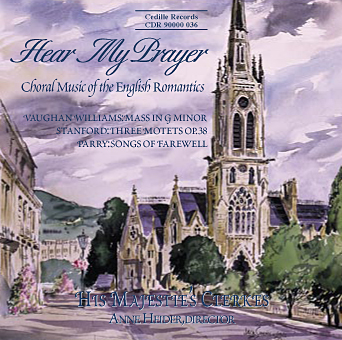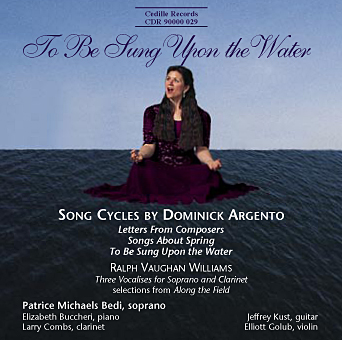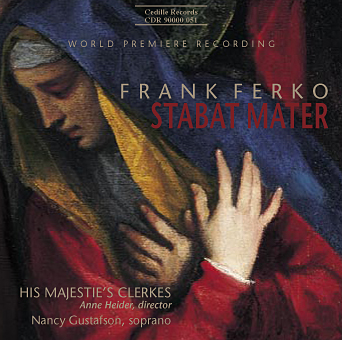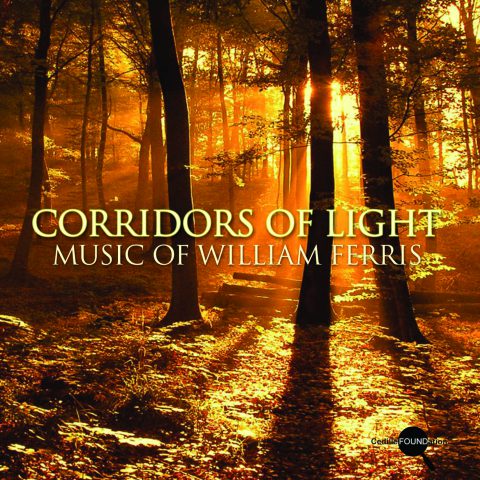| Subtotal | $18.00 |
|---|---|
| Tax | $1.85 |
| Total | $19.85 |
Store

Store
Hear My Prayer: Choral Music of the English Romantics
The mixed choir His Majestie’s Clerkes takes listeners to the heights of tonal beauty on this CD of rarely recorded, a cappella music by three English Romantic composers of the early twentieth century – Vaughan Williams, Stanford, and Parry.
Best known to most concertgoers as a symphonist, Vaughan Williams is represented by a large-scale work for chorus, his Mass in G Minor (1922). The Chicago Tribune described the Clerkes’ 1997 concert performance of this work as “rapt, strikingly beautiful . . . a genuinely moving experience.” Sir Richard Terry, director of the Westminster Cathedral Choir and leader of the English a capella revival, called Vaughan Williams’ mass “one of the greatest choral works of the century” for its fiery intensity and devotional spirit.
Stanford’s complete Three Motets, Op. 38, includes the beloved, oft-performed Beati quorum via, familiar to choral audiences and singers alike. On the new CD, listeners have the rare opportunity to hear the Beati along with its companion works, Justorum animae, and Coelos ascendit hodie.
Parry’s six searching, elegiac Songs of Farewell “represent his art at its deepest,” notes The Penguin Guide to Compact Discs – especially the poignantly intense and beautiful harmonies of At the round earth’s imagined corners. The songs, based on Biblical psalms and English poems, are considered Parry’s most inspired works. In the CD notes, Anne Heider, the Clerkes’ artistic director, observes, “The motets have a crescendo of texture, from four parts in the opening work to five, six, seven, and finally eight parts in the last, and a concomitant crescendo of emotional intensity, culminating in the anguished searching of Psalm 39 [“Lord, let me know mine end”].”
Founded in 1982, His Majestie’s Clerkes are known well beyond their hometown of Chicago through five previous recordings for the Centaur, Narada, and Harmonia Mundi labels and their nationally broadcast performances via WFMT Radio and National Public Radio’s Performance Today. Heider describes the 24-member chorus and its listeners as sharing “a passion for beautiful sound in beautiful spaces.”
“Clear, luminous tone is [their] trademark,” affirms the Chicago Sun-Times. To capture that sound on disc, Cedille chose to use a single pair of Schoeps MK21 (near cardioid) mics. Producer Jim Ginsburg says the objective was to convey “the lustrous sound of the chorus and the warm, reverberant acoustic of the room while preserving the detail and texture of the counterpoint and polyphony.”
Preview Excerpts
RALPH VAUGHAN WILLIAMS (1872-1958)
Mass in G minor
CHARLES VILLIERS STANFORD (1852-1924)
Three Motets, Op. 38
HUBERT PARRY (1848-1918)
Songs of Farewell
Artists
Program Notes
Download Album BookletHear My Prayer — Choral Music of the English Romantics
Notes by Anne Heider
What makes a 20th-century composer “romantic”? One of the hallmarks of romanticism is a preference for the distant over the immediate past as source material for new artistic creation. By deploying the forms, structural principles, and even some of the melodic idioms of plainchant and 16th-century polyphony, Vaughan Williams’s Mass in G minor qualifies, even though its essential voice is of the 20th century.
The first performance, by the City of Birmingham Choir under Joseph Lewis in 1922, drew critics’ fire: “Have there since [ninth century composer] Hucbald been so manzy consecutive fifths in a Mass?” huffed the Musical Times. Sir Richard Terry, who with his Westminster Cathedral Choir led the English revival of a cappella singing, gave the Mass its first liturgical performance in 1923 and defended the work as “one of the greatest choral works of the century,” praising its fiery intensity and devotional spirit.
Vaughan Williams conceived the piece in terms of its liturgical function. In this succinct setting, the composer uses deceptively simple means — haunting modal melodies, luminous triadic harmonies, and fluid, sensitive rhythms — to reveal and heighten the drama inherent in each of the five ancient texts. By bringing back in the final movement the opening melody of the first (at the words miserere nobis, which like Kyrie eleison are a prayer for forgiveness), Vaughan Williams creates a satisfying sense of wholeness and completion.
“Stanford was a great teacher,” said Vaughan Williams, “and like all great teachers he was narrow-minded. A broad-minded teacher is useless.”
A brilliant musician with apparently boundless energy, Charles Villiers Stanford became Organist of Trinity College at Cambridge while still an undergraduate, and also directed two musical societies in Cambridge. He was the principal composition teacher at the Royal College of Music from its opening in 1883, and was elected Professor of Music at Cambridge in 1887 (he held both posts until his death). He directed the London Bach Choir from 1885 to 1902 and the Leeds Festival from 1901 to 1910.
His students “smarted initially under the intolerant, autocratic lash of damning criticism of slovenliness, vulgarity, dubious material or workmanship, vagueness of attitude and the like; all acknowledged his ability to seize on the solution to every technical difficulty, and testified to the effectiveness and lasting worth of such teaching” (Frederick Hudson). Vaughan Williams, Holst, Coleridge-Taylor, Ireland, Bridge, Bliss, and Howells are among the many British composers who bloomed under Stanford’s tuition. His long list of works touches virtually every genre of classical composition including liturgical music and opera.
Charles Hubert Hastings Parry was an influential music educator and administrator as well as an eminent composer. He became Director of the Royal College of Music in 1894; six years later he was appointed Professor of Music at Oxford. His leadership and demand for higher standards helped free British musical life from unthinking deference to Continental composers and ushered in the second English Renaissance in music. He accepted perhaps too many festival commissions for oratorios and choruses, with predictable and occasionally perfunctory results; but when he composed for himself, the solid craftsmanship of his writing was illuminated by genuine artistry.
His most inspired and most personal music is contained in the six unaccompanied motets, completed in 1918, Songs of Farewell. Parry worked and reworked the motets intensively from 1913 through 1915. They were premiered in somewhat piecemeal fashion in 1916 and 1917 by Sir Hugh Allen and the Bach Choir. But the composer never heard them sung as an entire set; that did not occur until a memorial concert in 1919. The motets have a crescendo of texture, from four parts in the opening work, to five, six, seven, and finally eight parts in the last, and a concomitant crescendo of emotional intensity, culminating in the anguished searching of Psalm 39. Parry’s choice of texts reveals a crisis of faith (he was deeply disillusioned by the First World War); his settings illuminate the universality and emotional depth of these.
Album Details
Total Time: 58:39
Recorded: February 28 – March 2, 1997 at Mallinckrodt Chapel, Wilmette, Illinois
Producers: James Ginsburg and Burke Morton
Remastering Engineer: Bill Maylone
Production Assistant: David Dieckmann
Cover: Church of St. Michael & St. Paul, Bath, England. Watercolor by Jack Simmerling
Design: Cheryl A Boncuore
Notes: Anne Heider
© 1997 Cedille Records/Cedille Chicago
CDR 90000 036


